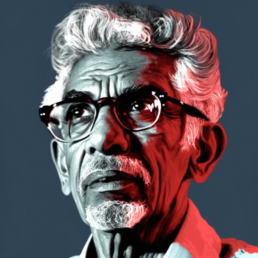Reincarnation as a theme always worked well in movies and even catapulted the careers of many. But it was that one script with reincarnation as the main plot of a love story that blazed the trail for later films such as Sonar Kella, Karz, and Om Shanti Om.
In the late 1950s Bengali scriptwriter, Ritwik Ghatak floated the idea of making a film on the subject of reincarnation to his close friend Bimal Roy. Roy was on the lookout for a new subject as his last film Devdas, released in 1955, was not commercially successful.
The idea was unconventional but not new, it had been used as a sub-plot in Ashok Kumar’s Mahal which catapulted the careers of Madhubala and Lata Mangeshkar. Roy decided to make the film which was to be titled Madhumati.
He roped in Dilip Kumar, Vyjayanthimala, and Pran to play the lead roles. Reincarnation was, however, not the only theme in the film. Ghatak was a master of parallel storytelling, imbibing themes never before tried or tested in Indian cinema.
His family had moved to Calcutta in the 1940s where he became involved in the world of theatre. In the late 1940s, he was drawn to leftist ideas after having witnessed the horrific famine of 1943 and riots of ’46 and ’47 in Calcutta.
Ghatak became obsessed with not just portraying realism but also adding layers of melodrama and disorienting soundtracks to shock the audience and leave them awestruck. He compelled them to engage on different levels with his subjects.
His first directorial venture was Nagorik, The Citizen. The film was on the topic of loss of homeland and livelihood and Ghatak completed it in 1952. Considered one of the first art films of Bengali cinema, it was, however, released many years later.
His second film Ajantrik, about a Taxi-driver, was the first of its kind to have an inanimate object as one of the characters in the story. It was termed sci-fi, but many would agree that the film stands beyond any conventional categorization.
Ghatak had a passion for rivers; he felt the flowing waters were a metaphorical reflection of one’s life, beyond arguments, beyond stories, and even beyond death. Though he was rooted in realism, he didn’t shy away from philosophical concepts.
In Madhumati, Ghatak takes an unconventional route yet again by bringing in reincarnation. He includes Spirits, Nature, Ghosts, and Rebirth and presents them in a much more tangible manner for the audience.
What may have been common in the years to come after Madhumati was not so conventional when it was made. The film was released on September 12, 1958, and got both critical and commercial acclaim.
It became the highest-grossing film of 1958 and got 12 nominations in the 6th Filmfare awards including one for best story. Unfortunately, Ghatak didn’t get the award, perhaps telling of the fact that he didn’t get the recognition he deserved while he was alive.
Today, November 4, is Ritwik Ghatak’s birth anniversary. We remember the genius for the vast richness of his work.
Sources: Shoma A. Chatterji, Ritwik Ghatak: The Celluloid Rebel, Rupa




